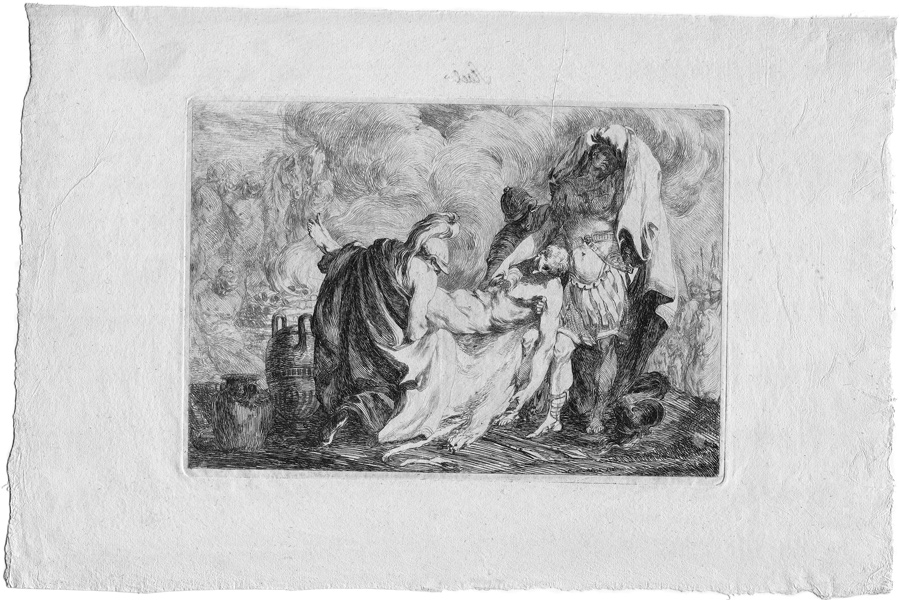Loading the page ...
Johan Tobias Sergel
(1714–1780, Stockholm)
Achilles and his companions carrying dead body of Patroclus to funeral pyre, Achilles laying lock of his hair on body. Etching. 19.5 x 27.7 cm. Circa 1766. Josephson 1956, p. 72 ff, fig. 72; Per Bjurström, Johan Tobias Sergel, Hamburg 1975, p. 103, no. 2.
Sergel was a sculptor who produced just two etchings, of which the entire older descriptive literature had no cognizance. In addition to the present print Bjurström published a second etching, created in 1766, on a Biblical theme: Joseph Being Sold by His Brothers. Sergel’s work as an etcher was evidently limited to these two pieces, which reveal an astonishingly sophisticated technical treatment nonetheless. An indication for the dating of the present etching is an impression bearing the inscription in the artist’s own hand: “Särgell invenit et fecit 1766”. The depiction has its origins in the poem Tableaux tirés d’Homère et de Virgile, published by Comte de Caylus in 1757, to which Sergel has given his own scenic interpretation by fitting several text passages together. Thus the grief felt by Patroclus’comrades-in-arms, Achilles’ despair at the sight of his dead friend and the preparation of the funeral pyre are woven together into a composition imbued with remarkable pathos and expressivity. The two men carrying the corpse are welded together with the figure of Achilles to form a compact group of figures that reaches its compositional climax in Achilles’ gesture of agonised grief. The very nimble, fluent engraving technique appears to have been inspired by 16th and 17th century Italian models, of which Sergel may well have seen the originals. The posture of Patroclus’ dead body is vaguely reminiscent of Parmigianino’s Entombment, Bartsch 5. However, the etching was probably made in Stockholm in the year before Sergel left for Italy.
A superb, even impression, printed on the full sheet. “Stael” written on the verso in pen and black ink in the artist’s own hand (?). In perfect condition.
